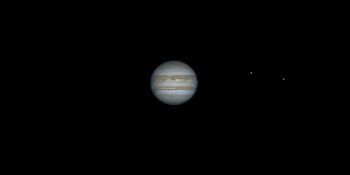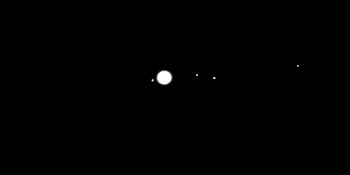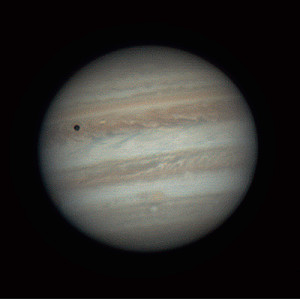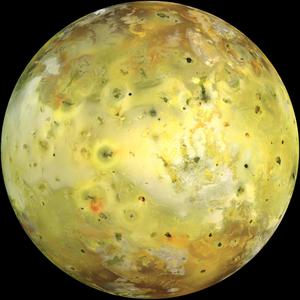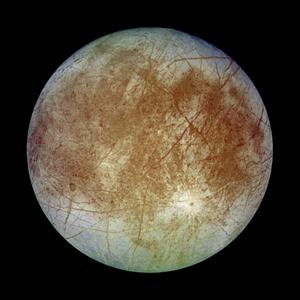Glossary term: Galilean Satellites
Description: The Galilean satellites are the four biggest and brightest satellites, or moons, orbiting the planet Jupiter: Io, Europa, Ganymede, and Callisto. Closest to Jupiter is Io, which has hundreds of active volcanoes. The main reason for Io's vulcanism is that Io is getting "kneaded" by the tidal effects of Jupiter's gravity. Europa's entire surface is covered with ice. Under the ice is believed to be an ocean of liquid water which is one of the best candidates for harboring life outside of Earth in the Solar System. Ganymede is the largest moon in our Solar System, and also the moon with the largest mass, at twice the mass of Earth's Moon. Callisto is almost exactly the same size as the planet Mercury, but has only about one third of Mercury's mass.
The four Galilean moons were discovered by Galileo Galilei in 1610, as one of several discoveries in Galilei's pioneering campaign of using a telescope for astronomical observations. Galilei was able to document that, over time, the four moons orbit Jupiter like a miniature solar system. This was a clear demonstration that astronomical objects can orbit a center other than the Earth; this observation played an important role in the shifting of the scientific consensus from the Earth-centered (geocentric) to the Sun-centered (heliocentric) view of the Solar System.
Related Terms:
See this term in other languages
Term and definition status: This term and its definition have been approved by a research astronomer and a teacher
The OAE Multilingual Glossary is a project of the IAU Office of Astronomy for Education (OAE) in collaboration with the IAU Office of Astronomy Outreach (OAO). The terms and definitions were chosen, written and reviewed by a collective effort from the OAE, the OAE Centers and Nodes, the OAE National Astronomy Education Coordinators (NAECs) and other volunteers. You can find a full list of credits here. All glossary terms and their definitions are released under a Creative Commons CC BY-4.0 license and should be credited to "IAU OAE".
If you notice a factual error in this glossary definition then please get in touch.
Related Media
Jupiter's Rotation, by Vishal Sharma, India
Credit: Vishal Sharma/IAU OAE
License: CC-BY-4.0 Creative Commons Attribution 4.0 International (CC BY 4.0) icons
Jupiter Moons Movie2, by Nicolas Hurez, Paul-Antoine Matrangolo, and Carl Pennypacker, United States of America
Credit: Nicolas Hurez, Paul-Antoine Matrangolo and Carl Pennypacker/IAU OAE
License: CC-BY-4.0 Creative Commons Attribution 4.0 International (CC BY 4.0) icons
Jupiter, Io and its shadow, by Ralf Burkart, Germany
Credit: Ralf Burkart/IAU OAE
License: CC-BY-4.0 Creative Commons Attribution 4.0 International (CC BY 4.0) icons
Io
Credit: NASA/JPL/University of Arizona credit link
License: PD Public Domain icons
Europa
Credit: NASA/JPL/DLR
License: PD Public Domain icons
